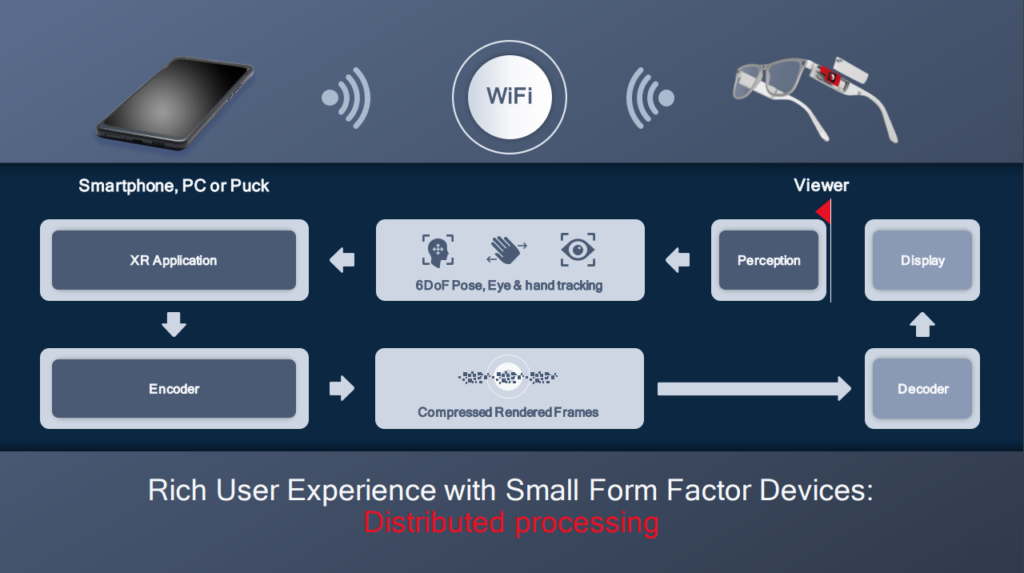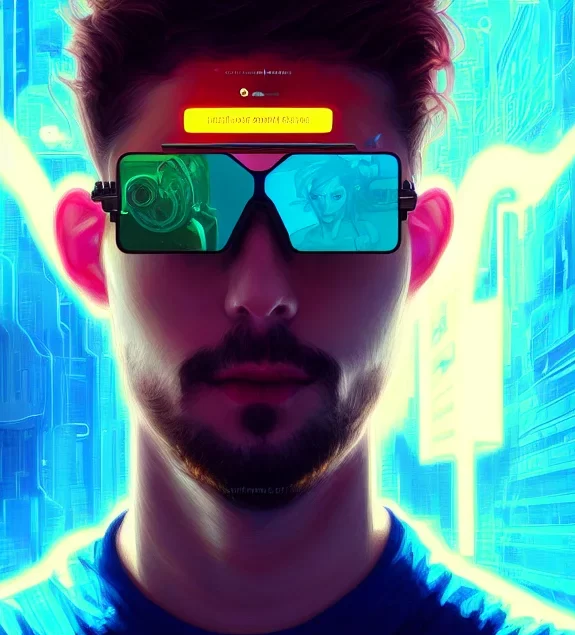After we discussed Virtual Reality (VR) and its implications let’s take a closer look at Augmented Reality (AR). While AR is currently not as present in the news or as developed as VR, it has the potential to be the more disruptive technology. Let us start with the current state of AR, its problems, and challenges, and after that, we take a closer look at its potential in the next few years.
We have to differentiate between devices that have AR capabilities like most recent VR headsets, and AR devices made for everyday use like glasses or contact lenses. While AR functionality in VR devices is important and opens up a lot of useful functionalities they are not the main topic of this post. The goal is a device that is stylish and comfortable enough to be worn all day and that provides a basic set of functionalities.
These devices are difficult to build, which is the reason why we haven’t seen them until now. You need sensors to embed the virtual elements into the real world and displays or lasers that allow you to present them without blocking the field of view and you need a lot of computational power and energy to make that possible. The displays work by either projecting the light directly into the eye or by projecting it on the glasses. the latter has the disadvantage of making it visible to other people around you which should be avoided due to privacy concerns. Some companies tried to build glasses like that. Hololens 2 from Microsoft is a good example of a device like that.
This is a good example of a product that has some good functionality but is not built for everyday use and it is not designed or priced for the consumer market. Some “smart” glasses provide audio but are not powerful enough to be called AR devices. Contact lenses are smaller and that makes the problem of fitting everything in even harder which is the reason why we have not seen a smart contact lens until now. So how do we get all the needed technology small enough to fit into a stylish pair of glasses? The answer is we do not. The solution is in our pockets. Companies like Apple spent years putting powerful computers in our pockets. While many argue that today’s smartphones are already more than powerful enough, their capabilities are barely at the point we need for the next step. When we connect our glasses to our phone we can outsource most of the computational power to our phone and can thus focus on sensors and displays that allow us to make the devices smaller. The key idea is a PAN (personal area network) with our phone as the main router and controller.

Apple is fighting since 2021 to get more bandwidth for Bluetooth to enable such functionality. Let us assume we bring enough power to our smartphones and we get a technology that allows high data rates in our PAN. We still have to fit sensors, displays, antennas, and batteries inside a small form factor. Some companies made incredible steps in this direction like the Mojo lens from Mojo vision, which managed to put everything needed in a contact lens and is confident to start selling them to the consumer market in 1-2 years.

But I think we will most likely see glasses from companies like Apple or Samsung in the next 10-20 months. Especially, Apple is a good candidate for the first AR device since they have all the needed functionality. Powerful chips in their phones and with ARKit already a software framework for this Hardware. The adoption rate will depend on the initial price. If they decide to lower the price as meta did with their meta quest, the glasses could be mainstream in two years. But if they push for the best possible hardware and sell them as a premium product, we will have to wait for the competition to release a cheaper option.
One of the best possible capabilities of AR devices will be what I call synchronized reality. If two people with AR devices meet, it will be important to have the possibility to make things that you see visible to the other person. This feature is important because things only appear real to us if others can see and interact with them too. An early example of something like this would be the “pokemon center” in the popular AR game Pokemon Go. The location of this virtual place is the same for every player, which is a core element of the game. Without this consistency, AR will be limited to the functionality that a modern smartwatch can provide. I am confident that a company like Apple is capable of implementing something like that for their devices. My biggest fear is that virtual objects will stay inside a system and the integration between different systems will not be possible. Considering the current state of message integration between iOS and Android, this scenario is most likely.

My guess is that useful AR technology will be available sometime in 2023 and will not be mainstream until 2025. At this point, some enthusiasts will experiment with the commercial use of Brain-computer interfaces which will then enhance AR devices and later replace them. I do not think that most people will adopt BCIs since the barrier of entry is way higher compared to AR devices and the gain will be marginal for a long time.

Leave a Reply